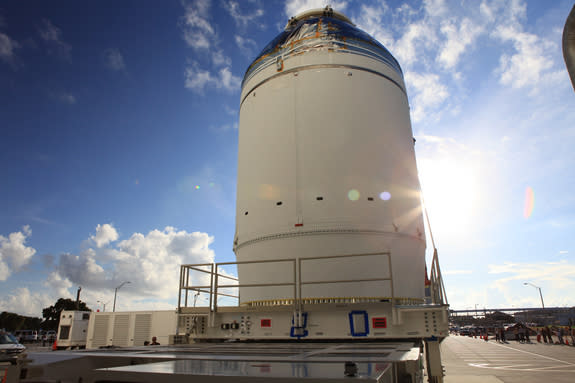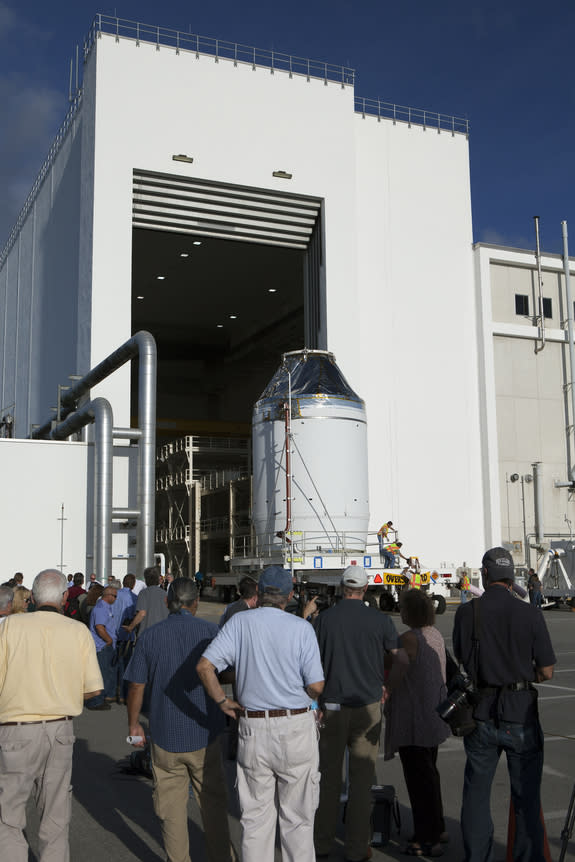NASA Completes 1st Orion Space Capsule for December Test Flight
NASA's first Orion space capsule, designed to carry astronauts to deep-space destinations, is ready for fueling ahead of its debut unmanned test flight in December.
On Thursday (Sept. 11), the space agency's Orion space capsule was transported from an operations and checkout building at the NASA Kennedy Space Center in Florida to a nearby building, where it will be fueled before launching into space in December.
For its December test flight, Orion is supposed to fly an unmanned test about 3,600 miles (5,740 kilometers) into space before returning for a high-speed entry similar to what astronauts faced during the Apollo missions.
"Nothing about building the first of a brand-new space transportation system is easy," Mark Geyer, Orion Program manager said in a statement. "But the crew module is undoubtedly the most complex component that will fly in December. The pressure vessel, the heat shield, parachute system, avionics – piecing all of that together into a working spacecraft is an accomplishment. Seeing it fly in three months is going to be amazing."
The just-completed crew module is the last major piece of the Orion spacecraft system, with the launch abort system finished in December and the service module completed in January. The crew module and service module were joined together in June for testing.
NASA plans to use Orion to send humans out into the solar system, perhaps to an asteroid or Mars. It is distinct from the commercial crew program that is expected to see private space taxis ferry astronauts to and from the International Space Station starting around 2017, should the current timeline hold.
To get into deep space, Orion will use the Space Launch System (SLS), a massive rocket that can kick astronauts out of Earth orbit. The SLS will not be ready for the test flight, however, so NASA will instead send Orion into space on a Delta 4 Heavy rocket.
Follow Elizabeth Howell @howellspace.Follow us @Spacedotcom, Facebookand Google+. Original article on Space.com.
Photos: NASA's Space Exploration Vehicle for Asteroids & Beyond
Orion Explained: NASA's Multi-Purpose Crew Vehicle (Infographic)
Orion Spacecraft Moved To Fueling Facility | Time-Lapse Video
Copyright 2014 SPACE.com, a TechMediaNetwork company. All rights reserved. This material may not be published, broadcast, rewritten or redistributed.


